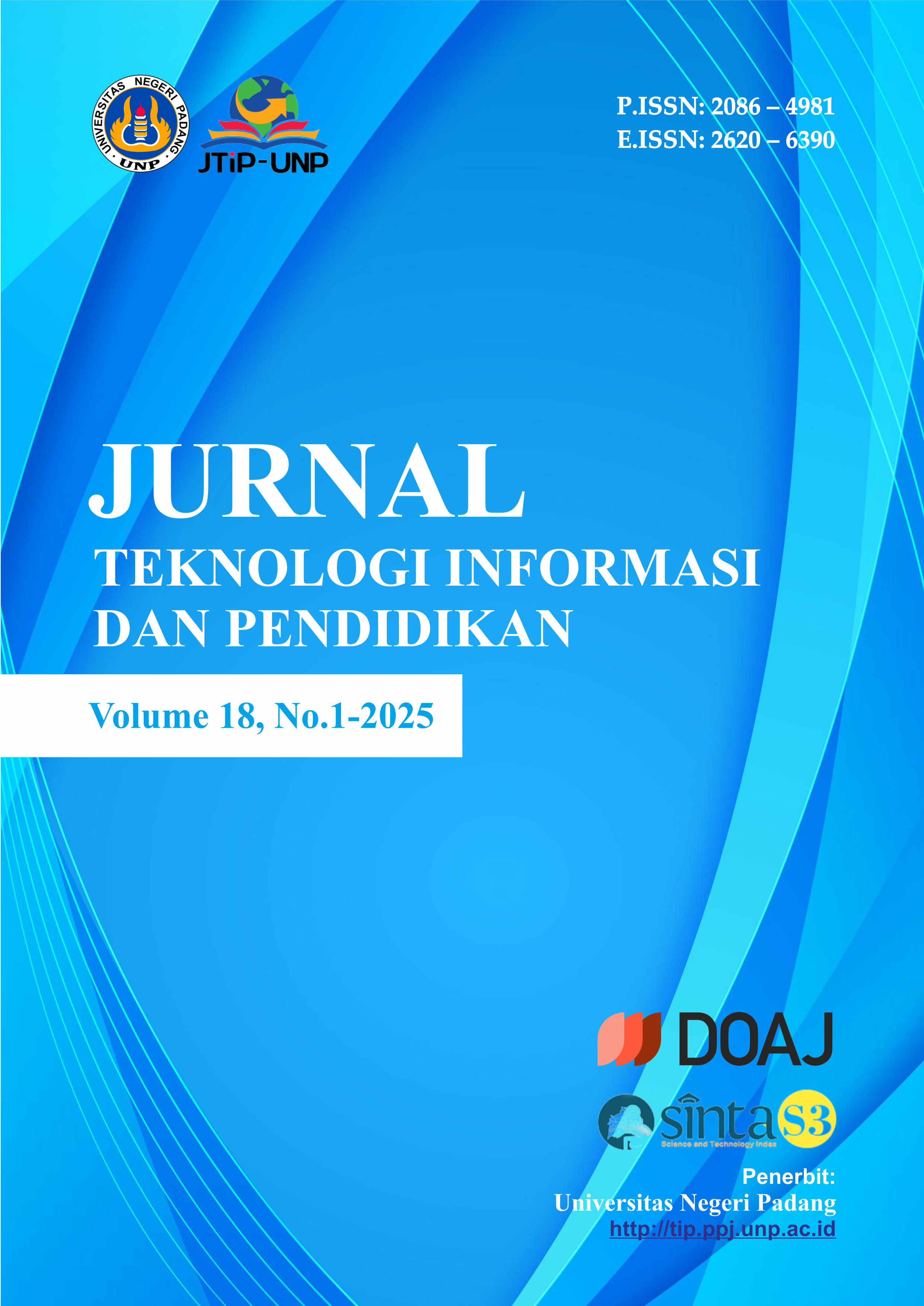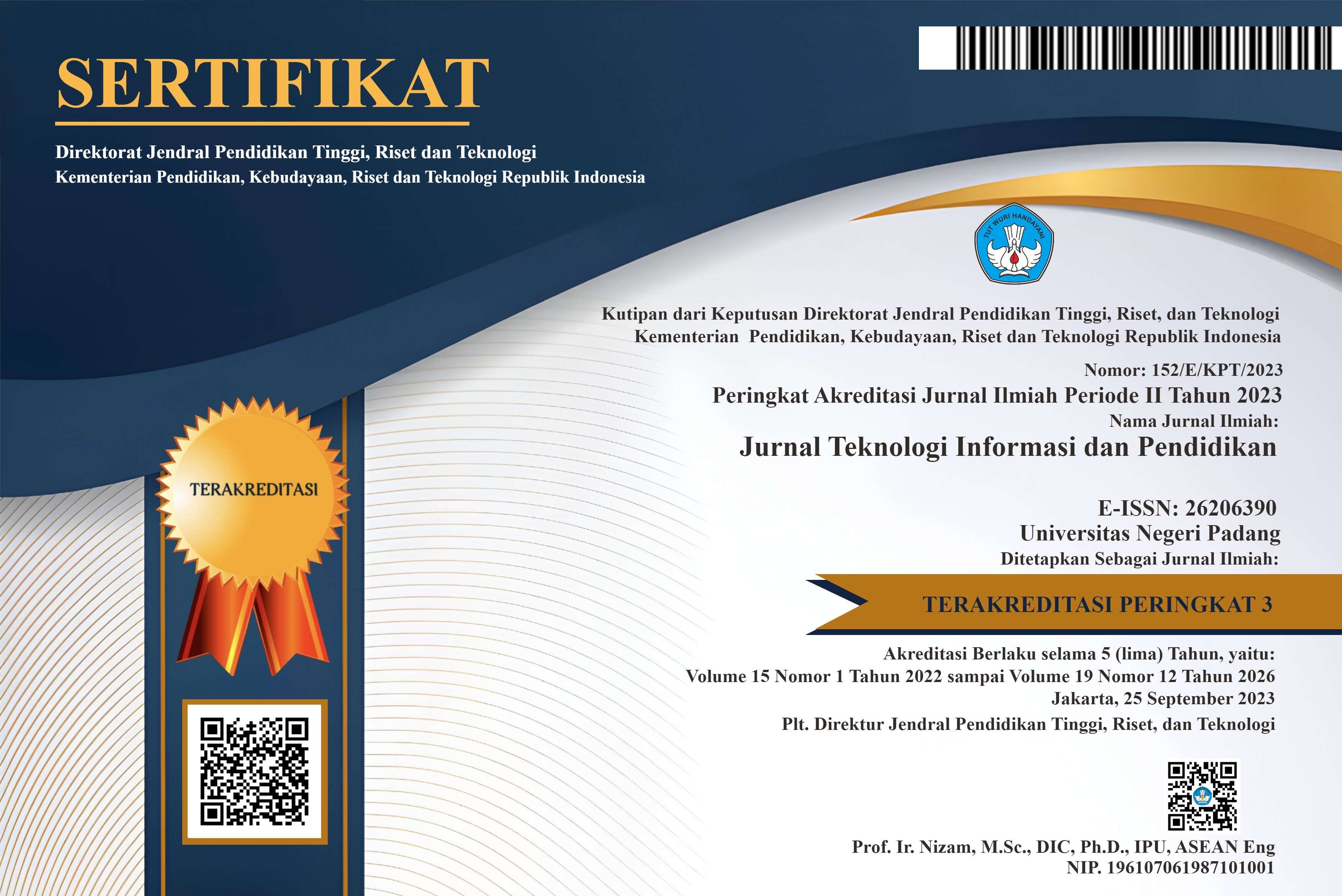Optimization of Web Server Load Balancing Using HAProxy with the Weighted Round Robin Algorithm
DOI:
https://doi.org/10.24036/jtip.v18i1.965Keywords:
Load Balancing, Weight Round Robin, HaproxyAbstract
The advancement of information and communication technology (ICT) in Indonesia has driven the widespread use of web-based services across various sectors, including education, public services, and digital administration. However, the growing traffic demand is often not supported by adequate server infrastructure, leading to issues such as slow access and system failures. These problems are primarily caused by unbalanced server workloads, especially when relying on a single server or lacking effective load distribution strategies. Load balancing technology is therefore essential to ensure stable and efficient web service performance. This study explores the implementation of the Weighted Round Robin (WRR) algorithm using HAProxy software to distribute loads proportionally based on each server's capacity. The research uses a quantitative experimental method by building a test environment consisting of one HAProxy server and multiple backend servers with different specifications. Traffic simulations are conducted using Apache JMeter to evaluate system performance based on technical metrics such as response time, and request success rate. The results of this study are expected to provide practical solutions for improving the reliability and efficiency of web services, particularly in supporting Indonesia's digital transformation initiatives that are often constrained by limited infrastructure resources.
References
R. Singh, “Intelligent Load Balancing Systems using Reinforcement Learning System”.
M. N. A. Rizqi and I. K. Dwi Nuryana, “Analisis Perbandingan Kinerja Algoritma Weighted Round Robin dan Weighted Least Connection Menggunakan Load Balancing Nginx Pada Virtual Private Server(VPS),” J. Informatics Comput. Sci., vol. 4, no. 01, pp. 67–75, 2022, doi: 10.26740/jinacs.v4n01.p67-75.
Nendi and T. S. N. Azhar, “Perimbangan Beban Web Server Menggunakan Metode Weighted Round Robin algorithma Round Robin pada PT.XYZ,” J. Sains dan Teknol., vol. 5, no. 1, pp. 183–192, 2023.
B. Arifwidodo, V. Metayasha, and S. Ikhwan, “Analisis Kinerja Load Balancing pada Server Web Menggunakan Algoritma Weighted Round Robin pada Proxmox VE,” J. Telekomun. dan Komput., vol. 11, no. 3, p. 210, 2021, doi: 10.22441/incomtech.v11i3.11775.
S. C. Degree, T. Engineering, F. Giacomini, R. Miccoli, and M. Kazemi, “Optimizing Web Service Performance : A Comparative Analysis of Load Balancing Strategies Using NGINX and HAProxy with StoRM WebDAV Deployment Defended by,” 2024.
A. Syaqia and Asmunin, “Implementasi Load Balancing Web Server Menggunakan Haproxy,” J. Manaj. Inform., vol. 08, no. 01, pp. 11–19, 2017.
M. A. Waluyo, F. Antony, and C. Setiawan, “Implementasi Load Balancing Web Server Dengan Haproxy Menggunakan Algoritma Round Robin,” J. Intell. Networks IoT Glob., vol. 1, no. 1, pp. 46–52, 2023, doi: 10.36982/jinig.v1i1.3074.
O.-C. Ri, Y.-J. Kim, and Y.-J. Jong, “Hybrid load balancing method with failover capability in server cluster using SDN,” 2023.
C. Rawls and M. A. Salehi, “Load Balancer Tuning: Comparative Analysis of HAProxy Load Balancing Methods,” 2022.
M. S. Pradana and A. Prapanca, “Analisis Performa Load Balancing Algoritma Weighted Round Robin di Infrastruktur BPBD Provinsi Jawa Timur,” J. Informatics Comput. Sci., vol. 1, no. 02, pp. 109–114, 2020, doi: 10.26740/jinacs.v1n02.p109-114.
K. Imam, M. Jufri, M. S. Lamada, and M. Agung, “Konfigurasi Load Balancing Pada Server Dengan Menggunakan Algoritma Round Robin di Universitas Negeri Makassar Universitas Negeri Makassar mengatasi masalah serupa . Hakim dkk ( 2019 ) melakukan pengujian load balancing pada web stabil meskipun banyak pen,” vol. 03, no. 3, pp. 397–413, 2025.
A. Wirawan, R. Gatra, H. Hidayat, and D. Prasetyawan, “Implementasi Load Balancing dengan HAProxy di Sistem Informasi Akademik UIN Sunan Kalijaga,” JISKA (Jurnal Inform. Sunan Kalijaga), vol. 9, no. 1, pp. 39–49, 2024, doi: 10.14421/jiska.2024.9.1.39-49.
G. H. Prathama, D. Andaresta, and K. Darmaastawan, “Instalasi Framework IoT Berbasis Platform Thingsboard di Ubuntu Server,” TIERS Inf. Technol. J., vol. 2, no. 2, pp. 1–9, 2021, doi: 10.38043/tiers.v2i2.3329.
A. F. Zahir, H. Wijaya, and M. Sanwasih, “Analisis Efektivitas Metode Round-Robin dan Least-Connection dalam Load Balancing Terhadap Throughput Server Web,” vol. 4, pp. 24–33, 2025.
A. Johansson, J. Zaxmy, and T. Fischer, “HTTP Load Balancing Performance Evaluation of HAProxy, NGINX, Traefik and Envoy with the Round-Robin Algorithm,” 2022.
P. Oricco, “Analysis and implementation of load balancers in real-time bidding,” no. January, 2022.
I. Technology, “Evaluation and Comparison of Load Balancing Algorithm Performance in the Implementation of Weighted Least Connections and Round Robin in Cloud Computing Environment,” vol. 6, no. 1, 2025, doi: 10.30596/jcositte.v6i1.21731.
N. M. Abdulkareem and S. R. M. Zeebaree, “Optimization of Load Balancing Algorithms to Deal with Ddos Attacks Using Whale optimization Algorithm,” J. Duhok Univ., vol. 25, no. 2, pp. 65–85, 2022, doi: 10.26682/sjuod.2022.25.2.7.
K. Chawla, “Reinforcement Learning-Based Adaptive Load Balancing for Dynamic Cloud Environments,” 2024.
Rahmat Kurniawan, Herlina Latipa Sari, and Hari Aspriyono, “Web Server Load Balance Design In Internet Network Using Nth Method Perancangan Load Balance Web Server Pada Jaringan Internet Menggunakan Metode Nth,” J. Media Comput. Sci., vol. 2, no. 2, pp. 185–202, 2023.
S. A. Rahman and T. Y. Hadiwandra, “Perbandingan Algoritma Weighted Least Connection dan Weighted Round Robin pada Load Balancing Berbasis Docker Swarm,” INOVTEK Polbeng - Seri Inform., vol. 8, no. 2, p. 228, 2023, doi: 10.35314/isi.v8i2.3395.
Downloads
Published
How to Cite
Issue
Section
License
Copyright (c) 2025 Jurnal Teknologi Informasi dan Pendidikan

This work is licensed under a Creative Commons Attribution-ShareAlike 4.0 International License.















.png)














